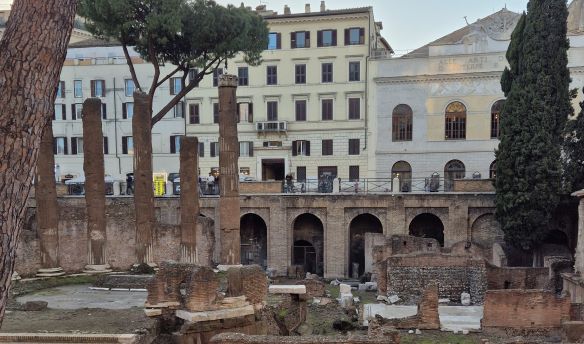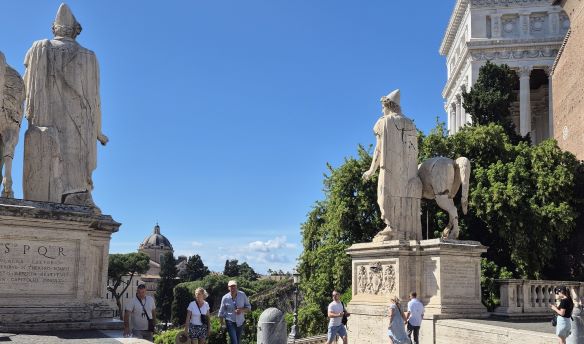Imagine that one of your ancestors arrived in Rome a thousand years ago, or more. Travelling to the powerful state was something that many dreamt of; a chance to earn a fortune, or at least a steady living.


Rome relied on the river Tevere, or Tiber, for its port, which in those days was next to the city. Foreigners came, often by ship, with skills or a willingness to learn. The original city, on the eastern side of the river, became crowded and many newcomers settled instead on the western bank.
The Trastevere
This western settlement became the Trastevere (‘across the Tevere’). Today it houses families who have lived there for generations and prosperous newcomers who buy beautifully restored loft apartments.
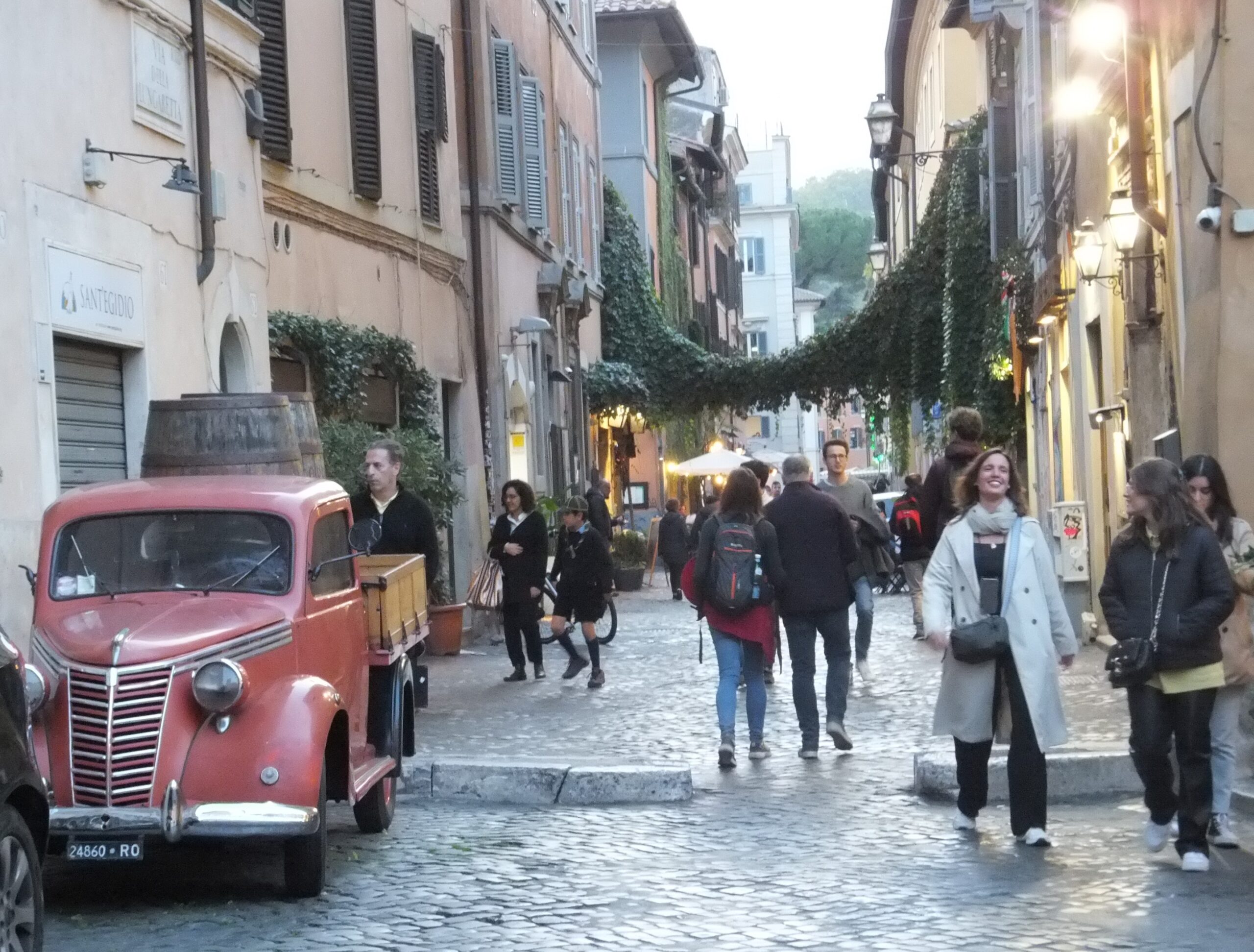
The Trastevere with its cobbled streets, lively cafes and bars is worth a trip across the river.
The Ponte Garibaldi and Ponte Sisto connect the east and west banks of the Tiber, leading directly to the Trastevere. It takes about a minute to cross either bridge on foot.
The photo shows Piazza Sidney Sonnino in the Trastevere, with the Ponte Garibaldi behind.
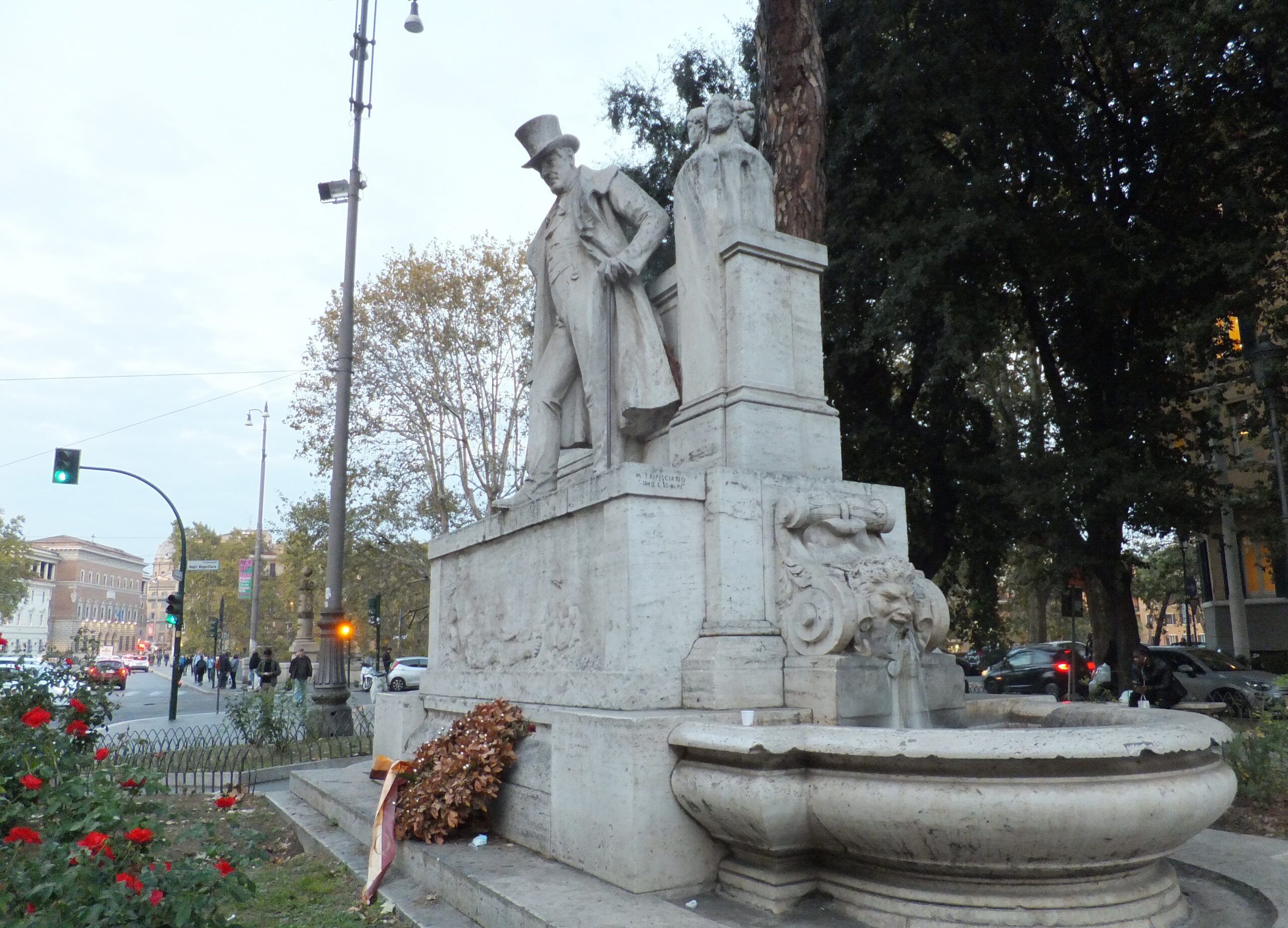
Otherwise, you can cross the Ponte Fabricio onto the Tiberina Island (the subject of an earlier article) and thence across the Ponte Cestio. If you walk without stopping it will take a minute or two … although you might choose to buy a gelato on the island and look around, or simply watch the river!

The photo shows the Tiberina island with its two bridges, taken from the western side of the Ponte Garibaldi. The Ponte Cestio is on the far right.
The Gianicolo – Hill of Heroes
To find the Gianicolo or Janiculum Hill, walk westwards through the Trastevere, where the land slopes upwards. If in doubt, follow the signposts or ask a local.
The hill is the subject of legend and history. It is said that Janus, the two-faced god, founded a city here and named the river Tiber after one of his sons. Much later, in 1849, Giuseppe Garibaldi and his men defended the Gianicolo against French troops. Garibaldi was fighting for the short-lived Roman Republic, part of the long struggle towards Italian unification. Reportedly, Garibaldi took his coffee each morning on the Gianicolo in sight of the French, as if to taunt them.
There are steps leading up the Gianicolo and then pavements to follow. As you walk, you will see statues of Giuseppe Garibaldi and his wife Anita and busts of prominent Italians (including the couple’s two sons).
Giuseppe’s monument is in Piazzale Giuseppe Garibaldi.

The statue by Emilio Gallori (1895) shows Garibaldi on horseback. The inscription on the base is ROMA O MORTE (Rome or death), which became his war cry later in the struggle for Italian unification.
In 1929, the statue was turned to face away from St Peter’s Square, apparently at the request of the Vatican. Garibaldi had worked to reduce the temporal power of the papacy and this, it seems, was the papal revenge …

… but the view is still wonderful!
If you follow the Passeggiata del Gianicolo, you will soon reach the Piazzale Anita Garibaldi and the monument to Anita, the wife of Giuseppe.

Anita was born in Brazil, Ana Maria de Jésus Ribiera da Silva. Her monument, inaugurated on 4 June 1932, was presented by the Brazilian government.
Along the base are illustrations of her life with Giuseppe.
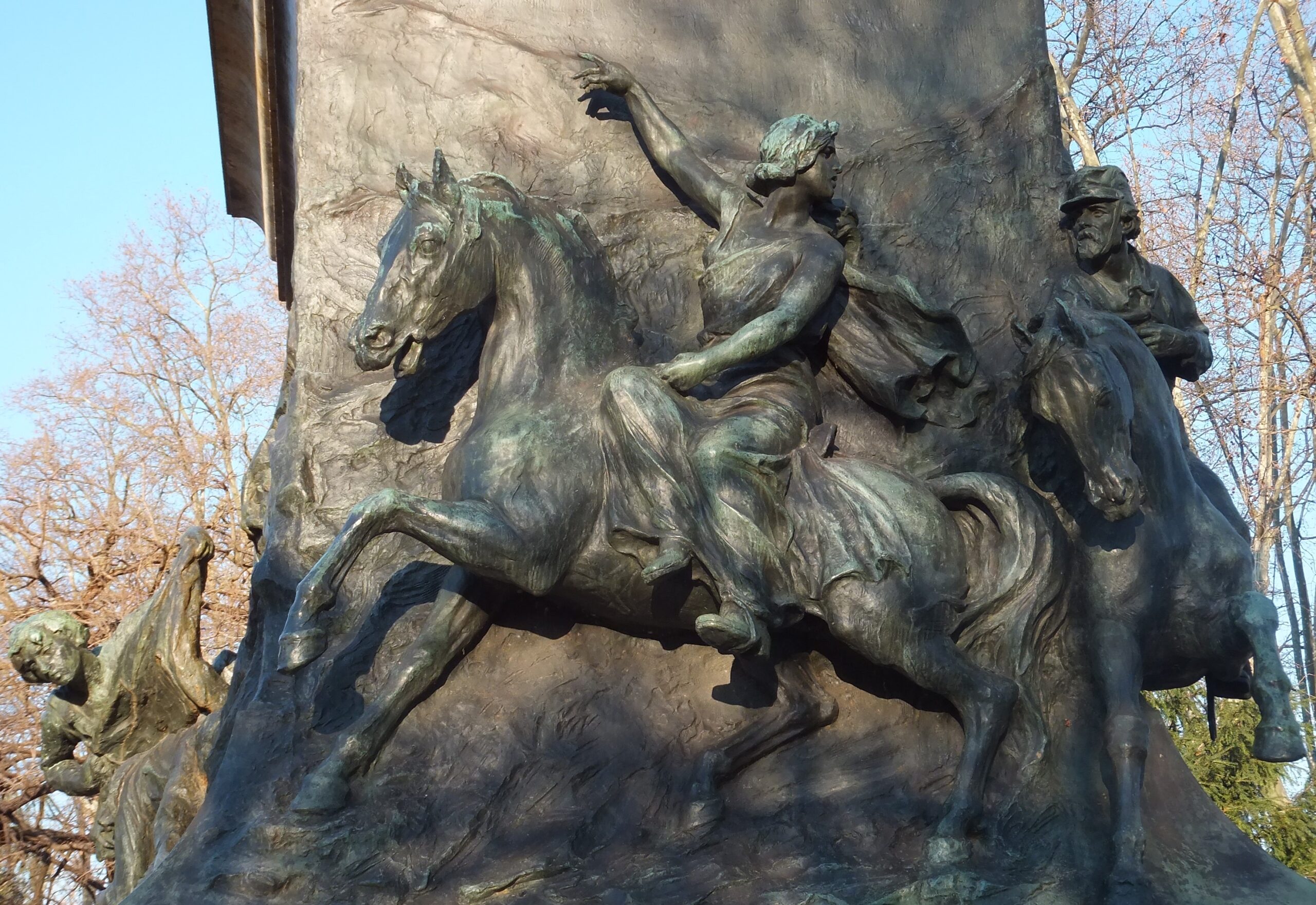
Anita met Giuseppe while he was fighting in South America and the statue is inspired by an incident during the war of independence of the Rio Grande do Sul Republic. The camp was suddenly attacked at night while Giuseppe was away. Anita had given birth days earlier but escaped with her baby by jumping on a horse and galloping off.

When Giuseppe returned to Italy in 1848, Anita travelled with him. The couple by then had had four children, although one daughter died in infancy.
Giuseppe’s place of birth was Nice, in those days part of the Kingdom of Sardinia, and his mother still lived there. Anita spent time in Nice with the children but often travelled to join Giuseppe. She was no stranger to battlefields and arrived part way through the defence of Rome, just as French cannon blew a hole in the roof of Giuseppe’s building!
After the city signed a peace agreement with the French, Giuseppe, Anita and a few thousand troops left to continue the fight. Sadly, Anita, who was pregnant again, fell ill (possibly with malaria). She died near Ravenna, at the age of 27.

The north facing illustration on Anita’s monument shows the distraught Giuseppe holding his wife.
Not everyone with a monument on the Gianicolo was famous …

This is a monument to six Sicilians (the symbol at its foot is the Trinacria of Sicily). Raffaele, the monument says, died in Rome; Salvatore and Pasquale fell at the barricades of Palermo; whilst Luigi and Carmelo fought as Legionnaires with Garibaldi between 1862 and 1867.
Beyond the Sicilians’ monument is the Faro al Gianicolo, the beacon. From there, once again, are wonderful views over Rome.

The prison of Regina Coeli is almost directly below the Piazzale del Faro and it is said that friends and families would shout from here, delivering news and messages to the prisoners!


